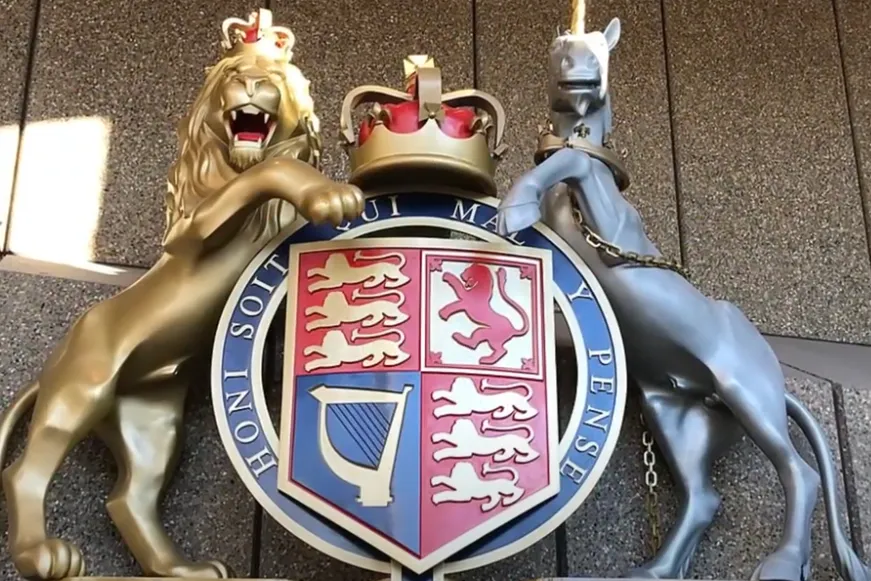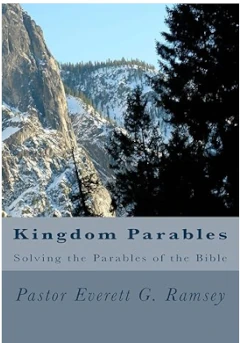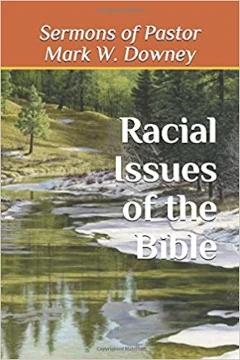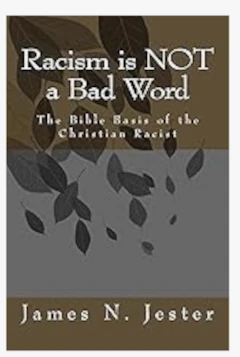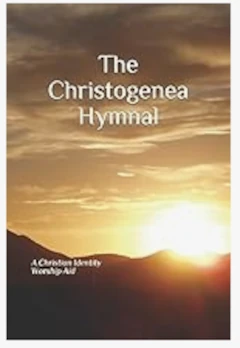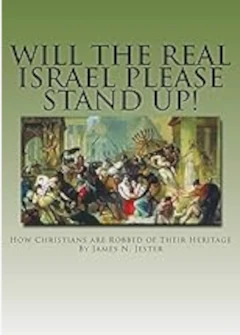John the Baptizer
by Rev. James Jester
August 4, 2024
SCRIPTURE READING: John 3:25-30
25 Then a controversy about ritual purification sprang up between a certain Jew and John’s disciples, 26 so they went to John and told him, “Rabbi, the man who was with you on the other side of the Jordan, the one about whom you testified—look, he’s baptizing, and everyone is going to him!”
27 John replied, “No one can receive anything unless it has been given to them from heaven. 28 You yourselves are my witnesses that I said, ‘I am not the Messiah, but I have been sent ahead of him.’ 29 It is the bridegroom who gets the bride, yet the bridegroom’s friend, who merely stands by and listens for him, is overjoyed to hear the bridegroom’s voice. That’s why this joy of mine is now complete. 30 He must become more important, but I must become less important.” (ISV)
INTRODUCTION
In my last sermon, “Baptism in Context,” I briefly mentioned about the baptizing that was done by John; so, in this sermon I wanted to examine that topic a little further. From that sermon I had said:
“What immersionists seem to forget, is that John’s baptism was still under the Old Testament system, which of course, Jesus Christ had to fulfill as role of priest for His people. At this time, the law required this ‘washing’ (baptism) of Jesus.”
It is obvious that John the baptizer knew something about the ritual “washings” under the Old Covenant, for he lived during this time when the Judeans used water to purify themselves ceremonially; as we see by the words “ritual purification” in our text (v. 25).
Of course, John urged the Judeans to repent, for he knew that unclean people could not ultimately clean themselves, except only in a limited sense. He also rebuked the Pharisees (Edomite jews): “O generation of vipers, who hath warned you to flee from the wrath to come?” (Lk. 3:7)
So in this sermon we want to see what the law had to say about these washings or baptisms; of which there are many in Leviticus chapters 11-15. For example, in chapter 14, for cleansing of a leper, the priest was to kill a bird over “running water” and “sprinkle it seven times” on the man to be cleansed of leprosy. Then the man was to wash his clothes, and wash himself in water.
Now, we do not use these laws today, for Paul has said these ordinances were “done away with” in the New Testament. But the Scriptures teach us lessons in the symbolism behind these former laws of Israel. The writers of the gospels understood the words “baptize” (wash) and “purify” (cleanse) to mean the same thing. The purpose is to separate or sanctify us unto service to God, as the law designs. Thus, John the baptizer could be called “John the purifier” (in a limited sense) for that was the main point of his preaching: “Repent ye, for the kingdom of heaven is at hand.” To him it wasn’t about water, but about beginning a living faith before our Lord and Leader.
Speaking of purity, John also said;
“I indeed baptize you with water; but one mightier than I cometh, the latchet of whose shoes I am not worthy to unloose: he shall baptize you with the Holy Ghost and with fire: 17 Whose fan is in his hand, and he will throughly purge his floor, and will gather the wheat into his garner; but the chaff he will burn with fire unquenchable.” (Lk. 3:16-17)
The emphasis was not to be upon John (v. 30), although our Lord exalted him as the greatest of the prophets; but rather, the One coming after him, Jesus the Christ. It is He that would increase in importance, and would baptize with the Holy Ghost. The “fire” accompanies the Spirit of God. A “fan” produces the air-flow to make the fire hotter and more efficient. Thus, it completes its cleansing work, burning up the “chaff” of sin, which enables and empowers a holy life within the believer. It is the fire that we need, not the water.
JOHN’S BACKGROUND
Under the heading of ‘John the Baptist’ in Easton’s Bible Dictionary we read:
“The ‘forerunner of our Lord.’ We have but fragmentary and imperfect accounts of him in the Gospels. He was of priestly descent. His father, Zacharias, was a priest of the course of Abia (I Ch 24:10), and his mother, Elisabeth, was of the daughters of Aaron (Lk 1:5). The mission of John was the subject of prophecy (Mat 3:3; Isa 40:3; Mal 3:1). His birth, which took place six months before that of Jesus, was foretold by an angel. Zacharias, deprived of the power of speech as a token of God’s truth and a reproof of his own disbelief with reference to the birth of his son, had the power of speech restored to him on the occasion of his circumcision (Lk 1:64). After this no more is recorded of him for thirty years than what is mentioned in Lk 1:80. John was a Nazarite from his birth (Lk 1:15; Num 6:1-12). He spent his early years in the mountainous tract of Judah lying between Jerusalem and the Dead Sea (Mat 3:1-12).
At length he came forth into public life, and great multitudes from ‘every quarter’ were attracted to him. The sum of his preaching was the necessity of repentance. He denounced the Sadducees and Pharisees as a ‘generation of vipers,’ and warned them of the folly of trusting to external privileges (Lk 3:8). As a preacher, John was eminently practical and discriminating. Self-love and covetousness were the prevalent sins of the people at large. On them, therefore, he enjoined charity and consideration for others. The publicans he cautioned against extortion, the soldiers against crime and plunder. His doctrine and manner of life roused the entire south of Palestine, and the people from all parts flocked to the place where he was, on the banks of the Jordan. There he baptized thousands unto repentance.
The fame of John reached the ears of Jesus in Nazareth (Mat 3:5), and he came from Galilee to Jordan to be baptized of John, on the special ground that it became him to ‘fulfill all righteousness’ (Mat 3:15). John’s special office ceased with the baptism of Jesus, who must now ‘increase’ as the King come to his kingdom. He continued, however, for a while to bear testimony to the Messiahship of Jesus. He pointed him out to his disciples, saying, ‘Behold the Lamb of God.’” [End quote]
JOHN KNEW THE LAW
What was the law concerning cleansing and separation unto God? The book of Numbers, chapter 19, states:
“And a clean person shall take hyssop, and dip it in the water, and sprinkle it upon the tent, and upon all the vessels, and upon the persons that were there, and upon him that touched a bone, or one slain, or one dead, or a grave: 19 And the clean person shall sprinkle upon the unclean on the third day, and on the seventh day: and on the seventh day he shall purify himself, and wash his clothes, and bathe himself in water, and shall be clean at even.” (Num. 19:18-19)
Another example:
“Whosoever toucheth the dead body of any man that is dead, and purifieth not himself, defileth the tabernacle of the LORD; and that soul shall be cut off from Israel: because the water of separation was not sprinkled upon him, he shall be unclean; his uncleanness is yet upon him.” (Num. 19:13)
Moses sprinkled with the “water of separation” to cleanse, purify, sanctify (set apart), wash, etc. These words are used interchangeably in the Bible; meaning a baptism or ordinance of separation. John the baptizer, who was an Israelite of Judea, his father a priest, understood Israelite laws of cleansing from physical defilement.
Nowhere do we find in the law of God any concept of full-body immersion in the government of Israel. All ceremonial cleansings (baptisms) were performed by effusion; that is, sprinkling, pouring, or anointing. The Israelite method of washing or baptizing was that which separated and distinguished them from the pagans who engaged in such activities without understanding the true meaning behind them.
David said in Psalm 51: “Thou shalt sprinkle me with hyssop, and I shall be purified: thou shalt wash me, and I shall be made whiter than snow.” (Ps. 51:7, Brenton LXX) It was God who cleaned up David.
John baptized the Christ, so let us examine the Mosaic law under which John lived and Jesus came to fulfill. What did the law require?
- It required circumcision (Gen. 17:12). Christ was circumcised at eight days of age according to the law (Lk. 2:21). Under the New Covenant, circumcision is of the heart; the emphasis is no longer placed on the older physical act, but rather upon the act that followed and sanctified the circumcision, which was the sprinkling of pure water. The Edomite jews had emphasized the wrong principle taught in the separating ordinance. They had missed the point of the law by taking it out of context; that is, to make us pure and separate for the priesthood.
- The law required the presentation of the child in the temple. Jesus was presented (Lk. 2:22). Christ alone is the entrance into the house of God.
- The law required that a person was responsible for keeping the law at age twelve. This is why Jesus was found in the temple with his parents at the age of twelve (Lk. 2:42) honoring the law of the covenant.
- The law required priests to be dedicated to the priesthood at thirty years of age and upward (Num. 4:47; 8:8; Lk. 3:23). Christ was a priest (Heb. 3:1) and He had reached the age of thirty years.
Jesus the Christ, of himself, did not seek to be a high priest. This was already the plan of God; “Thou art a priest for ever after the order of Melchisedec.” (Heb 5:6) When Jesus came to John to be dedicated, and John hesitated, he then said, “Suffer it to be so now: for thus it becometh us to fulfil all righteousness.” (Matt. 3:15) John had been instructed in the law and knew what Jesus meant. He knew that an Israelite priest was never full-body immersed. So how was it done? According to the law — by sprinkling or pouring. So John reached down for some water and anointed Jesus with it.
When Jesus cleansed the temple by driving out the Edomite money-changers, and the jews asked by what authority He did it, He referred to His baptism by John, which clothed Him with the authority of a priest and prophet to minister in the temple. Jesus did not begin his ministry until after John had baptized Him as priest according to the law of Moses. Jesus said to his disciples; “…Everything written about me in the law of Moses and the prophets and the psalms must be fulfilled.” (Lk. 24:44, RSV)
Jesus was not baptized to show us an example that we should follow, because He did not apply for baptism until all the people had been baptized (Lk. 3:21). Besides, He was thirty years of age; would He have us all wait to that age before we are separated unto God’s service? The main reason Jesus was baptized was for His dedication to the priestly office as Prophet and High Priest of the Father’s work. It was the new Order of things. When Israelite priests were dedicated, water was poured on their heads, and they were anointed with oil. Jesus had water poured or sprinkled upon His head by John as a preparatory step for the anointing of the Holy Spirit. Jesus was fulfilling the law found in Numbers; “From thirty years old and upward even until fifty years old, all that enter into the host, to do the work in the tabernacle of the congregation.” (Num. 4:3; also I Chron. 23:3) Jesus complied with the law of 30 years. Why would He not comply with the method of dedicating a priest, which was by sprinkling or pouring?
And why did Jesus stand in the Jordan River for John to baptize him? The answer is found in Joshua, “And thou shalt command the priests that bear the ark of the covenant, saying, When ye are come to the brink of the water of Jordan, ye shall stand still in Jordan.” (Jos. 3:8) A river is not very deep at the edge.
CONCLUSION
Considering the historical perspective of Christianity, the majority of Protestant, Catholic and Greek Orthodox Christians reject the teaching and practice of Baptism by full body immersion. Of course, this fact proves nothing; but it does impose a responsibility upon immersionists to rationally consider, in an objective way, the historical Christian majority’s interpretation on the subject, if for no other reason than to gain more understanding.
And, we should also consider that just as our Bibles have been altered, so likewise, the definition of words could very well have been altered in the lexicons and dictionaries. What is most important is not so much the meaning of a word, but how that particular word is used in its context. For example, the words “bapto” and “baptizo,” and their related words, are used in the ancient texts with such latitude, liberty and application, as to support the conclusion that the command to “baptize by immersion” is totally false and unjustified.
“Since the Reformation and the later rise of many Baptist groups in the late 1600’s as distinct denominations with their tenet of ‘baptizing by dipping,’ the meanings of the Greek words in question have been a matter of dispute. Baptist supposed Greek scholars have thought of many ways to change the previous definitions given to the words. Thus, their successors have been confused by the contradictory definitions of the previous works; of which changes were made to give a broader definition to encompass both views. But looking at the classic use of the words in question, it is evident that bapto means: 1) to dip; 2) to dye by dipping; 3) to dye in general without a specific mode; 4) to gild or glaze, as in pottery; 5) to wet or wash; 6) to temper, as in tempering hot iron, which was often done by pouring or dipping; 7) and to imbue or permeate, as the mind is said to be baptized with fantasies and not dipped into them. This example is also seen in the phrase ‘imbued with righteousness,’ for one cannot be dipped, but is permeated with it or imbued with it. Thus, from looking at these definitions, it has to at least be granted here that the command to baptize, which is given with the word bapto, is not restricted to plunging, immersing, or dipping.” (Observation by V. S. Herrell, Water Baptism, p. 9)
The word baptizo means to “make fully wet,” among other things (including immerse), which can certainly be done by immersion, but it doesn’t necessarily have to be by that method. It can be accomplished by a lot of pouring. We have words like this in English. For example, the word “baptize” in Greek (baptizo) is like the word “kill” in English. The word kill indicates a desired goal when used, but it does not indicate the method of doing it. The one told to kill could use any method imaginable, as long as the results end in death. Likewise, the word baptize was to produce a certain effect, that of Baptism, but no particular mode is indicated. In Daniel 4:30, we read that the body of Nebuchadnezzar was “wet with the dew of heaven.” Wet is translated for ebaphe, a form of baptizo, and here in this sentence the circumstances exclude the possibility of dipping.
Full body immersion is the method of all the pagan cult religions, including Judaism. Even today the jews still use this form of baptism to become “born again.” The Talmudic Jews of Palestine are known as the “fathers of baptism.” For the past 2,000 years the jews have attempted to merge the church with mystery Babylon. Have they been successful in their goal?
From the language of Scripture there is no basis for Baptism by full body immersion. From the facts shown in the law of God we have clearly seen a very different picture of Baptism than is often seen in many churches — that it positively specifies sprinkling or pouring. John the baptizer was not a law-breaker, and he certainly knew the law. Furthermore, Philo, the Alexandrian Israelite, has reported that, “It was customary for the Judeans to sprinkle themselves with river water.”
Neither Baptism, nor John, should be placed upon a pedestal (in high regard); for he was simply the forerunner introducing the Christ. John said, “He must increase, but I must decrease.” (Jn. 3:30)
The most important baptism of all is the one predicted by John, that is, the one baptism provided by Jesus Christ our Lord, the baptism of the Holy Spirit (fire). We are to be immersed in Him, imbued by Him, cleansed by Him, led into truth by Him, given power by Him, and comforted by Him.


